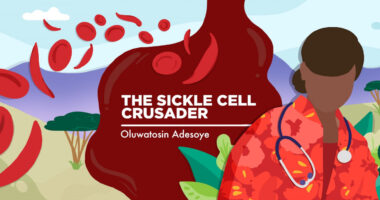EU Approves Adakveo to Treat Pain Crises in SCD Patients, 16 and Older

The European Commission has approved Novartis’ Adakveo (crizanlizumab) as a preventive treatment for recurrent vaso-occlusive crises (VOCs) in people, 16 and older, with sickle cell disease (SCD).
The approval covers the use of Adakveo in combination with hydroxyurea (also known as hydroxycarbamide) — another approved therapy for SCD — and as a stand-alone therapy in patients for whom hydroxyurea treatment is inappropriate.
This approval follows a recommendation for conditional approval issued in July by the European Medicines Agency’s Committee for Medicinal Products for Human Use. Adakveo is now the first targeted SCD therapy to be approved in the European Union to prevent VOCs. It was approved for the same indication last year in the U.S.
VOCs, one of the most common SCD complications, are painful episodes caused by the obstruction of small blood vessels, leading to oxygen shortage and tissue damage. These pain crises are particularly common in SCD patients, because their abnormally shaped red blood cells tend to stick to each other and to blood vessel walls, increasing their risk of experiencing these episodes.
“Data shows that nine out of ten people living with sickle cell disease experience one or more VOCs in a year, with a third of those crises leading to hospitalization, underscoring the significant unmet need among a vulnerable group of patients,” Kees Roks, head of Europe region at Novartis Oncology, said in a press release.
“Just one VOC could be catastrophic for the patient, so preventing these sudden, unpredictable and life-threatening events is hugely important,” he said. “Today’s decision gives people living with sickle cell disease a chance to achieve that goal.”
Formerly known as SEG101, Adakveo is a monoclonal antibody that binds and blocks the activity of P-selectin — a protein that helps increase the stickiness of sickled red blood cells — thereby lowering the risk of blood vessel blockage and VOCs in these patients.
Both approvals were supported by data from a Phase 2 trial, called SUSTAIN (NCT01895361), which enrolled a total of 198 SCD patients, 16 and older, who had a history of frequent VOCs (two to 10 pain crises in the year before enrolling in the trial).
Following enrollment, participants were randomly assigned to receive one of two doses of Adakveo (2.5 mg/kg or 5 mg/kg) or a placebo, all given by intravenous infusion, every other week for the first two doses, and then every four weeks for about one year.
More than half of the patients (62.1%) received Adakveo as an add-on treatment to hydroxyurea, while the remaining 37.9% were treated with Adakveo alone.
The main goal of the study was to assess if Adakveo would be able to reduce the frequency of annual VOCs requiring a visit to a medical facility and treatment with either opioids or nonsteroidal anti-inflammatory drugs to control pain.
Findings from SUSTAIN showed that when given at the highest dose, Adakveo was able to lower the frequency of annual VOCs by 45% (1.63 vs. 2.98 for the placebo). These reductions were seen in all treated patients, regardless of the type of mutations they carried or previous treatment with hydroxyurea.
Adakveo was also able to lower the number of days patients remained in the hospital due to VOCs by 42% (median of 4.0 vs. 6.87 days), and increase the time until patients experienced their first VOC (4.1 months vs. 1.4 months) when administered at a dose of 5 mg/kg.
Importantly, the proportion of patients who did not experience VOCs over the entire period of the study was nearly two times higher among those treated with Adakveo (36%), compared to a placebo (17%).
The most common side effects of treatment included joint pain (18%), nausea (18%), back pain (15%), and fever (11%).
Adakveo previously received the designations of orphan drug and breakthrough therapy from the FDA, and is now approved in 36 countries worldwide to treat those with SCD who are 16 and older.
An open-label Phase 2 trial called SOLACE-kids (NCT03474965) is ongoing to determine the best dose of Adakveo for pediatric patients. The study is recruiting children and adolescents, six months to 17 years old, who experienced at least one VOC in the previous year.
Enrollment is ongoing at 50 sites across the U.S., Canada, Europe, and elsewhere, and its findings may provide evidence to support an extension of Adakveo’s approval to include younger patients.






